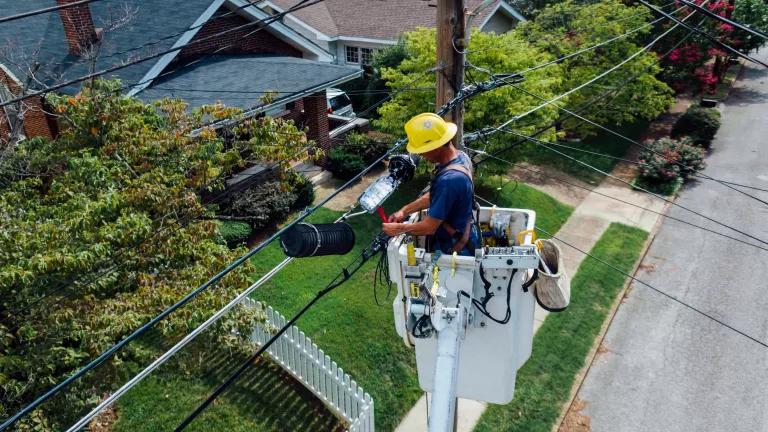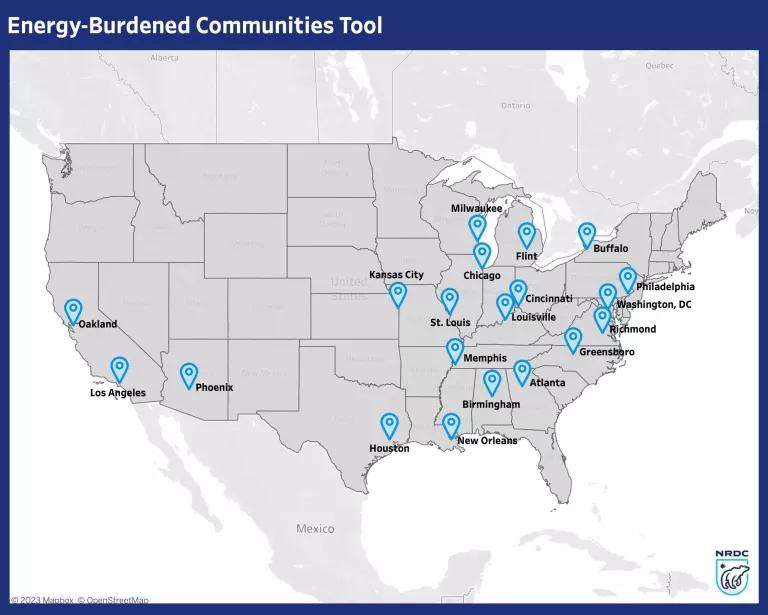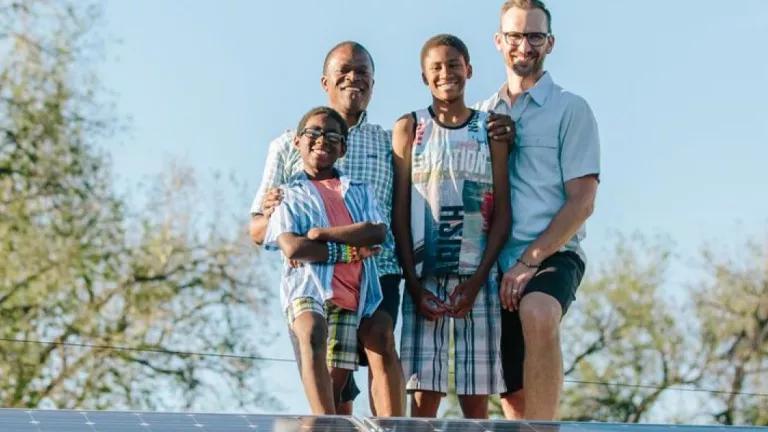A Resource for Energy-Burdened Communities
Energy burden has disproportionately impacted low-income communities of color for decades. NRDC is actively working to bring justice to these communities through this mapping tool.

Kelly via Pexels
Our access to energy and electricity has come to define our everyday lives, from transportation to indoor heating and cooling to Internet access. Without energy, our comfort, mobility, well-being, and health are negatively impacted, which is why it is crucial that affordable energy be available to all. But for 38 percent of U.S. households who have a high or severe energy burden, energy and electricity remain inaccessible.
Energy burden is the percent of median annual income that households pay for electricity and gas bills. Households with a high energy burden pay more than 6 percent of their income on energy bills; those with a severe energy burden pay more than 10 percent. This renders energy inaccessible to millions of families around the United States, most of whom are already historically underrepresented and marginalized.
Low-income families are more likely to live in energy inefficient or inaccessible homes that are also more subject to the presence of mold and/or lead, poor air quality, and a lack of sufficient heating and cooling. This disproportionately impacts people of color, older adults, and individuals with disabilities, who most often reside in housing with unfavorable conditions.
For these already vulnerable individuals, energy burden exacerbates risk of displacement, racial inequities, adverse health outcomes, income stress, and more:
- The median energy burden for renters is 13 percent higher than that of owners, making energy burden a primary contributor to displacement and high eviction rates.
- People of color, older adults, and people with disabilities have an average energy burden of 19 percent, compared with a national average of 4 percent.
- High energy burden has been strongly correlated to detrimental effects on health; as energy burden increases, so does risk for mental health issues; pulmonary, respiratory, and cardiovascular diseases; injuries; excess winter/summer deaths; and more.
- Energy burden is not a singular problem. It is intersectional, affecting households’ access to other critical resources, which can lead to food, water, and housing insecurity.
But there is a solution. With a housing justice framework, we can repair decades of injustice using federal policy and data to our advantage.
With the passage of the Inflation Reduction Act (IRA) last year, energy-burdened communities have an unparalleled opportunity to decarbonize their homes: through the Department of Housing and Urban Development’s (HUD) Green and Resilient Retrofit Program, $2 billion will be distributed to owners of HUD-assisted housing to implement energy and climate efficiency retrofits, and the U.S. Department of Energy’s Home Energy Rebate Program will disperse $8.8 billion to states and tribal governments for home energy efficiency and electrification upgrades.
These investments have the potential to reduce residential energy consumption, which accounts for more than 20 percent of the nation’s total energy consumption, by 20 to 30 percent. They will also help make significant progress in the reduction of greenhouse gas emissions, as the housing sector accounts for 20 percent of greenhouse emissions. Most importantly, when executed with effective anti-displacement strategies, this moment gives us the opportunity to bring climate and housing justice to the communities who need it most.
The alignment of these IRA programs with Justice40 is the first step in making this possible, by requiring that at least 40 percent of benefits be allocated to disadvantaged communities.
But energy burden is inextricably linked to displacement and negative health outcomes and deeply impacted by racial and socioeconomic background. That’s why the people who are most in need of investments for energy efficiency are those experiencing a high energy burden, and they are a subset of the disadvantaged communities identified by the federal government. To help ensure that energy-burdened communities receive the greatest benefits, we must identify where exactly these communities are—which is the goal of NRDC's Energy-Burdened Communities Tool.

This mapping tool looks at 20 U.S. cities and indicates which areas in each city are the most energy-burdened. Take Philadelphia, for example. After you select the map pin, the tool navigates to a map of the city. The places in blue are the census tracts where the average energy burden is above 6 percent and, simultaneously, the median annual income indicates a very or extremely low-income community. The color’s shade indicates how severe the average energy burden is for that tract, and the range of values can be seen on the scale on the right.
Hovering over each tract displays the data pertaining to that specific area. You can then corroborate this data with the text on the right to see how the metrics for that tract compare to the metrics of the city overall.
There are also multiple map layers that can be applied that demonstrate how race, health, and displacement intersect and overlap in these energy-burdened communities. Like the blue base map, each layer color coordinates to the scales on the far right. You can explore the range of values for each indicator and use the color’s shade to see how prevalent an indicator is, with gray indicating no prevalence.
Also like the base map, you can hover over each tract to view the tract number, energy burden, median income, and the indicator that you have selected (e.g., average asthma rate when the “High Asthma Rates” layer is selected). You can compare the data for each tract to the overall city data indicated in the text. This is replicated for 19 other cities, which you can access by returning to the U.S. map.
We hope this tool will help cities, local organizations, and advocates identify and prioritize the most energy-burdened communities and strengthen applications for the Green Resilient Retrofit Program, the Home Energy Rebates Program, and other federal funding for communities whose need for housing and climate justice is long overdue.
Explore the Energy-Burdened Communities Tool.



